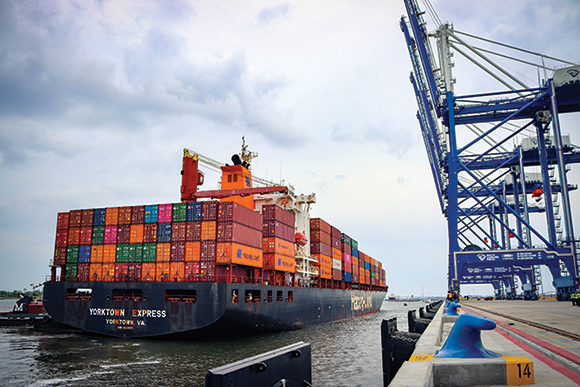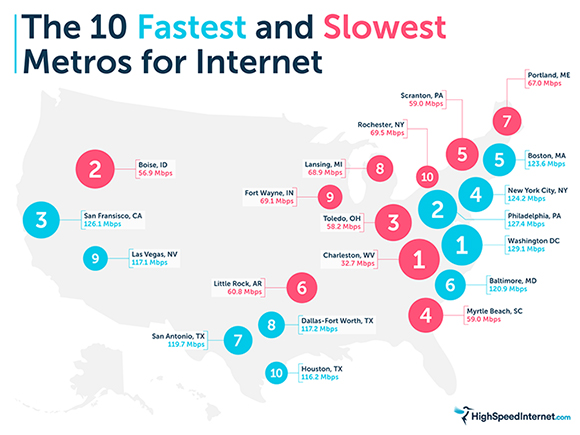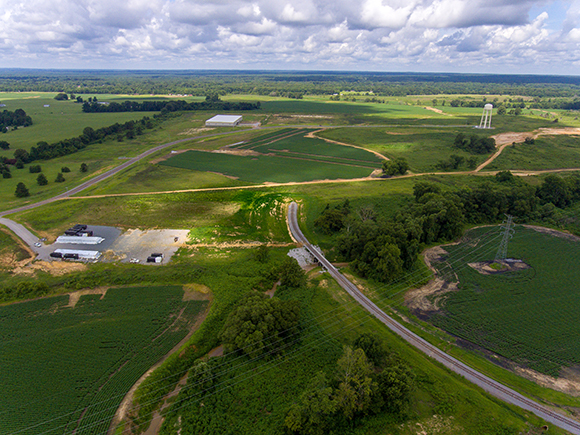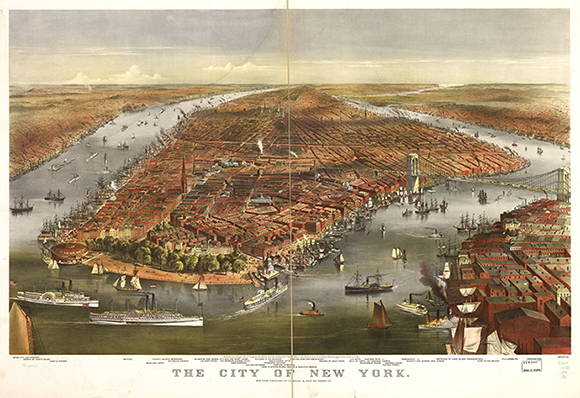|
  
| FROM SITE SELECTION MAGAZINE, MAY 2021 ISSUE |
 |
KENTUCKY
Ron Starner talks to Kentucky Lieutenant Governor Jacqueline Coleman and learns how the highly decorated coach and career educator is transforming cradle-to-career prep in the state.
|
|
 |
INVESTMENT PROFILE: SOUTH CAROLINA PORTS AUTHORITY
Learn why the Hugh K. Leatherman Terminal is an investment in the future of South Carolina that is paying immediate dividends.
|
|
| CONWAY ANALYTICS SNAPSHOT |
Top 10 Most Liveable Cities, Spring 2021
| Rank |
City |
Location |
Index |
Stability |
Healthcare |
Culture & Environment |
Education |
Infrastructure |
| 1 |
Auckland |
New Zealand |
96.0 |
95 |
95.8 |
97.9 |
100.0 |
92.9 |
| 2 |
Osaka |
Japan |
94.2 |
100 |
100.0 |
83.1 |
91.7 |
96.4 |
| 3 |
Adelaide |
Australia |
94.0 |
95 |
100.0 |
83.8 |
100.0 |
96.4 |
| 4 |
Wellington |
New Zealand |
93.7 |
95 |
91.7 |
95.1 |
100.0 |
89.3 |
| 4 |
Tokyo |
Japan |
93.7 |
100 |
100.0 |
84.0 |
91.7 |
92.9 |
| 6 |
Perth |
Australia |
93.3 |
95 |
100.0 |
78.2 |
100.0 |
100.0 |
| 7 |
Zurich |
Switzerland |
92.8 |
95 |
100.0 |
85.9 |
83.3 |
96.4 |
| 8 |
Geneva |
Switzerland |
92.5 |
95 |
100.0 |
84.5 |
83.3 |
96.4 |
| 8 |
Melbourne |
Australia |
92.5 |
95 |
83.3 |
88.2 |
100.0 |
100.0 |
| 10 |
Brisbane |
Australia |
92.4 |
95 |
100.0 |
85.9 |
100.0 |
85.7 |
|
Source: The Economist Intelligence Unit
|
The Economist Intelligence Unit just issued its Global Liveability Index 2021. As one might suspect after navigating a pandemic year, some shifting has occurred. The index ranks 140 cities across five areas — stability, healthcare, education, culture and environment, and infrastructure — based on data gathered between February 22 and March 21, 2021. “The overall global average liveability score has fallen by seven points, as compared with the average pre-pandemic score,” the EIU reports. “The extent to which cities were sheltered by strong border closures, their ability to handle the health crisis and the pace at which they rolled out vaccination campaigns drove significant changes in the rankings.”
No. 1 Auckland (up from No. 6 in autumn 2020) is one of six cities in New Zealand or Australia to make the top 10, while many European and Canadian cities fell due to restrictions brought about by a second wave of COVID-19 — Frankfurt, Hamburg and Dusseldorf, Germany, have seen the biggest falls in ranking. However, some things haven’t changed: Damascus, Syria, is still the least liveable of the 140 cities evaluated.
Liveability doesn’t always equate to surging economic development activity. But there is some overlap: A look into Conway Analytics’ Conway Projects Database finds that since January 2018, the most active cities for corporate facility investments among the top 10 shown above are led by a long shot by Melbourne, Australia (45 projects), followed by Tokyo (25) and a tie between Adelaide and Brisbane, Australia, with 15 projects each — Adam Bruns
|
Biggest Upward Movers, EIU Liveability Index 2021
| City |
Location |
Index |
Rank |
Rank move |
Index move |
| Honolulu |
US |
90.6 |
14 |
46 |
14.2 |
| Houston |
US |
84.0 |
31 |
31 |
7.8 |
| Madrid |
Spain |
86.8 |
19 |
25 |
5.5 |
| Miami |
US |
84.3 |
28 |
24 |
5.6 |
| Barcelona |
Spain |
88.3 |
16 |
22 |
5.5 |
| Pittsburgh |
US |
85.3 |
25 |
22 |
5.4 |
| Chicago |
US |
84.3 |
28 |
21 |
5.1 |
| Minneapolis |
US |
83.4 |
36 |
19 |
5.6 |
| Boston |
US |
83.8 |
34 |
18 |
5.1 |
| Melbourne |
Australia |
92.5 |
8 |
16 |
5.0 |
|
Source: The Economist Intelligence Unit
|
|
  |
| BUILDING A BETTER KENTUCKY |
 |
AUTOMOTIVE
Since 2014, automakers and suppliers have announced 439 projects in Kentucky accounting for $11 billion in capital investment and nearly 22,000 jobs.
|
|
 |
DISTILLERIES & SPIRITS
The bourbon industry alone, which accounts for more than 20,000 jobs in the state, helped Kentucky recently earn the title of No. 1 state for whiskey exports.
|
|
 |
STATISTICAL PROFILE
The picture of Kentucky’s economic momentum grows clearer in these facts and figures.
|
|
CHINA
GoodWe in late May held the opening ceremony for phase II of its site in Guangde, which is expected to boost production capacity of solar power inverters to 1.2 million units per year, achieving a total of 25GW of overall production capacity. “Guangde’s strategic location will facilitate easy access to the massive market opportunity in the Yangtze River Delta economic area,” the company said. “With phase II of our Guangde manufacturing base, the company’s production capacity, industrial image and influence will improve quickly,” said GoodWe founder and CEO Daniel Huang. “GoodWe will make the most of the solar industry boom, continue to devote its efforts to power electronics technology as its core, while expanding its influence in photovoltaic, energy storage, smart energy and other fields and create a new era of smart energy. GoodWe is determined to become the main driving force in the global energy transition and create a sustainable future for the earth, mankind and future generations.” GoodWe has more than 2,000 employees across 15 countries.
MISSOURI
Delta Peanut, a peanut shelling facility 100% owned by farmers from the Missouri bootheel, Arkansas, and Northeast Louisiana, in May broke ground for a new processing plant in Kennett, located almost as far south as you can go in that bootheel before you run into Arkansas. The company’s only other plant is in Jonesboro, Arkansas, located just over an hour’s drive to the southwest. “Our investments in Kennett will complement our existing capacities to shell and sell edible peanuts while also expanding our footprint for production and capabilities to service new segments and additional markets,” Delta Peanut CEO Tommy Jumper said. “Several specific opportunities fit us perfectly and supported our efforts to grow in such a challenging time. I’ve been amazed at what can be accomplished when 75 farm families partner with authorities who all want the same thing.” The average wage for the new manufacturing jobs will be $38,250, well above the average for Dunklin County. As a farmer owned company, Delta Peanut will be using the Missouri Agricultural and Small Business Development Authority’s New Generation Cooperative Tax Credit. The program encourages investment in entities that process Missouri agricultural commodities and products by issuing tax credits directly to producer members.
|
|
| SITE SELECTION RECOMMENDS |

Map courtesy of HighSpeedInternet.com
|
|
Sometimes there are too many good new sources of business intelligence to pick just one. So here are three:
Amid a rapid reopening of the US economy and a huge increase in demand for workers, a new survey from The Conference Board released last week found that businesses are having immense difficulty finding qualified workers, with 80% of organizations hiring mostly industry and manual services workers reporting difficulty finding qualified workers, and 25% reporting it is very difficult.
A new report from leading product and sourcing platform Thomas claims that reshoring could drive $443 billion in U.S. economic value over the next year, led by the automotive and oil & gas sectors. The 2021 State of North American Manufacturing Annual Report says 83% of North American manufacturers are likely or extremely likely to reshore (up from 54% in March 2020). “We are witnessing the wholesale reexamination of supply chain relationships, which will realign global manufacturing for decades to come,” said Tony Uphoff, Thomas president & CEO. “The insights from this year’s State of North American Annual Report further underscore the need for increased investment in skilled labor and manufacturing technologies to ultimately improve the trade deficit and future-proof supply chains to protect against potential disruptions.” The registered users of the Thomasnet.com® platform are reflecting this trend in reshoring as well. “Thomas has processed more than $204 billion in sourcing requests over the past 12 months,” said the company, “in comparison to $69 billion in calendar year 2018.”
HighSpeedInternet.com’s latest report names the 10 fastest and slowest U.S. metros for internet speeds,” from among the 100 largest metros nationwide. Among the findings: Washington D.C. was fastest (129.1 Mbps); Charleston, West Virginia was slowest (32.7 Mbps); and median average download speeds in New York City increased over 20 Mbps within the last year. |
|

Business and Technology Park
The Business and Technology Park in Grenada, Mississippi, is 1,175 acres, and is located at 505 American Way. The property is an industrial site along I-55 and is for sale or lease. It has utilities on site, including rail and an adjacent airport. Utilities are supplied by the Tennessee Valley Authority, and water is provided by the city of Grenada. Atmos Energy supplies natural gas, and the site does include fiber optics from AT&T, Cspire and Sparklight. The nearest federal roadway is U.S. Highway 51.
This industrial park is served by three airports: Grenada Municipal Airport (3.9 miles), Memphis International Airport (92 miles) and Jackson-Medgar Wiley Evers International (117 miles).
The northern section of the park also features a 500,000-square-foot ready pad TVA site. This site is in the New Market Tax Credit Zone and has access to three ports: Port of Rosedale (70 miles), Lowndes County Port (100 miles) and Port of Gulfport (270 miles).
For more information on these sites, go to grenadameansbusiness.com.
|
|
 |
Photo courtesy of the U.S. Library of Congress
|
|
This image of an 1870 panoramic depiction of New York City by Currier & Ives is part of a Library of Congress Geography and Map Division collection of 1,517 panoramic maps. “The panoramic map was a popular cartographic form used to depict U.S. and Canadian cities and towns during the late nineteenth and early twentieth centuries,” the LOC explains. “Known also as bird’s-eye views, perspective maps, and aero views, panoramic maps are nonphotographic representations of cities portrayed as if viewed from above at an oblique angle. Although not generally drawn to scale, they show street patterns, individual buildings, and major landscape features in perspective.” |
|
|
|

